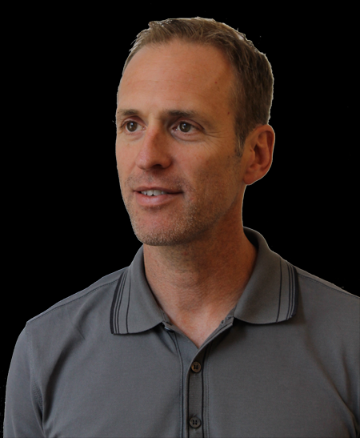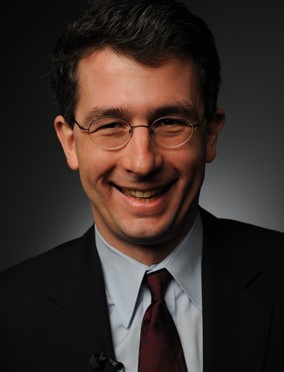The Jay Sears Interview -- Paul Rostkowski, President, Varick Media Management

Continuing a recent series of interviews with global trading desk heads that recently culminated in his Six Advertising Automation Trends for Buyers and Sellers, Jay Sears, SVP at Rubicon Project, trades questions and answers with Paul Rostkowski, President of MDC’s trading desk Varick Media Management.
Your Name: Paul Rostkowski
Your Company: Varick Media Management
Your Title: President
What Flavor Ice Cream Best Describes Your Management Style:
Carvel Soft Serve Chocolate – simple and proven.
SEARS: On average—out of each $1.00 spent on media (all media, not just digital) by one of your advertisers, how much today is spent on automated or programmatic channels?
ROSTKOWSKI: From what our clients share with us (because not all clients share this information), there is a range of spend amount on programmatic media. The low end is probably around $0.05 while some, typically smaller clients, spend closer to $1.00. Our largest clients, as well as some of our smallest, have a pretty good understanding of the benefits of programmatic. It’s often the clients in between who often need more hand-holding.
SEARS: What was this number two years ago, in 2011?
ROSTKOWSKI: Spend ratios are probably pretty similar, but to simply answer this question we’re running 20x the number of ad campaigns on a monthly basis than we were in 2011, so adoption is much higher today.
What will this number be two years from now, in 2015?
ROSTKOWSKI: Hopefully my campaign number will be 100x higher than it is now, but in terms of dollars I can’t imagine anything less than $0.30–$0.50.
SEARS: Describe how most media (all media, digital + non-digital, non-programmatic media) is bought and sold today.
ROSTKOWSKI: Ironically, digital is probably the most complicated of all media due to the fragmentation of the web, the many ad sizes, the T & Cs, and the different technology from RTB to DSP to SPP, yadda yadda yadda. Digital media is tough for many to understand. Having said that, we only need very short lead times to turn campaigns live and we’re beginning to automate almost all of the processes. Regarding other mediums, I don’t think their processes or programs have changed that much over the last several decades.
For example, we are in the process of launching a linear television business and the TV folks really want to believe that nothing is broken and nothing needs to be fixed. But from what I’ve seen the process has been pretty simple: there are assets phone calls, emails, and (literally) faxed contracts.
SEARS: Tell us the about Varick Media Management.
ROSTKOWSKI: Varick Media Management (VMM) launched in 2008 as the first data-driven trading desk for agencies and brands. VMM’s skilled human capital leverages granular audience insights and real-time bidding through a multi-bid tech approach to drive outcomes. We sit on top of the most proven technologies in buying and optimizing media across all programmatic channels including display, mobile, pre-roll, linear TV, and Internet radio. VMM built its proprietary Data Management Platform, "The Lens," in-house to collect and sync first-party user data with third-party data segments for audience definition, verification, and analysis. The Lens enables Varick's insights platform, an audience discovery and campaign-planning tool.
SEARS: Please tell us:
· Overall managed budget (media spend) for your trading desk, expected 2013 GLOBAL:
o ROSTKOWSKI:My publicly traded parent company does not allow me to disclose specifics on financials.
· Percentage increase, managed budget (media spend) 2012 vs. expected 2013 [Global only #]:
o ROSTKOWSKI:At the risk of getting my hand slapped I will say our business is up over 50%.
· How many employees globally?
o ROSTKOWSKI:
- Worldwide- 0
- Europe- 0
- The United States- 30 people -- double what we were last year.
- Asia- 0
- Other- 0
SEARS: What are Varick Media Management’s three biggest initiatives for 2014?
ROSTKOWSKI: Productization of our engineering capabilities with data management: We’re looking into building tools for our traders by providing them access to new types of information. We’re beginning to generate this information via log file ingestion from several DSPs into our DMP.
We’re looking to build a world-class data science practice. While this certainly plays a part of the productization piece mentioned above, this element is specifically more about how we activate and visualize data insights to make our clients smarter and more successful.
With our rapid growth we haven’t been able to maintain as much focus on the development on our people. We are placing a lot more emphasis on education, mentoring, and career development in 2014.
SEARS: By 2015, what percentage of total media spending across your holding company will be programmatic?
ROSTKOWSKI: To be clear, our holding company agencies are only making up only a portion of our client base. We have a sales organization focused largely on business external to MDC. In this capacity we provide either white label solutions or ad hoc trading desk services for many independent shops. To answer your question, I would estimate that say that by 2015, depending on how much the pace to which TV media becomes programmatic, I would say in the 40-50% range.
SEARS: To reach a higher adoption of direct deal automation and use of the programmatic channel, what are the major impediments to overcome? Rank these in numerical order:
ROSTKOWSKI:
_3_ Operational or workforce issues inside the holding companies or operating agencies- In the past we have seen a lack of experienced talent managing publishers’ RTB yield operations. More recently, we’ve started working with a smarter group of people, enabling a more rapid adoption of programmatic practices.
_2_ Premium (direct deal) inventory availability via programmatic- depending on how you’re defining “premium,” publishers continue to make their best quality ad space inaccessible to programmatic technology. In order for programmatic to have a chance, they’re going to need to release more quality inventory to exchanges. Additionally, ”premium” is also highly dependent on the type of advertising campaigns being run, for example branding vs. performance marketing. Furthermore, it’s also highly dependent on better attribution modeling coming into the picture.
_4_ Lack of proper ad technology- This really isn’t an issue as far as I’m concerned. The SSPs generally provide enough tech and knowledge to get most publishers over the hurdle here.
_5_ Alignment of agency compensation models- I don’t really think this is a problem at all. The bigger issue here is the alignment of publishers’ compensation models for their sales teams who generally are most directly affected by programmatic.
_1_ Other: Publisher’s concerns on revenue equality- Assuming what you’re meaning is agency-level site-direct deals, a primary obstacle that we faced is a publisher’s concern over reduced rates or reduced spend. RTB enables us to cherry pick the perfect audience, retargeting for example. While we’re willing to pay high CPMs for this, there are often questions on how scalable this is on the site direct level.
SEARS: How are RFPs used between your operating agency clients and your trading desk? What does a “Programmatic IO” or a “Programmatic RFP” look like?
ROSTKOWSKI: We’re aiming to make RFPs and IOs far more automated in 2014. In fact, internal workflow is already highly automated. Unfortunately, the RFP process still feels a lot like it did back in 2001. Whether that’s an email function with an excel and keynote response, or accessing MediaVisor.
SEARS: What should top comScore publisher CROs do to build their direct order automation and programmatic selling with your trading desk and operating agencies?
ROSTKOWSKI: I think they need to become more familiar with the space. I don’t tend to see many of them at the trade events I attend. I usually come across all the usual suspects such as SSPs, DMPs, DSPs, etc. As an industry we need to engage in more conversations and more networking with many of the fine publishers in the digital space.
SEARS: Why is direct deal automation so important? Is it important?
ROSTKOWSKI: The reason why it’s so important is because it will make the clients, advertisers, and the guys with the money more successful in their digital efforts. Content is still critically important and we’ve lost sight of that to some degree as data-driven audience targeting has ramped. Let’s face it, almost everything becomes automated over time and the publishers that adopt automation faster are probably going to put themselves ahead of the curve.
SEARS: All of you work for global companies. What global markets are the leaders and laggards in programmatic?
ROSTKOWSKI: Obviously, the current leader is the US. Asia, China in particular, is probably the only other market that could challenge the US in the near future. Most of the markets are highly fragmented. Take Europe, for example. Europe is really about 20 different markets, all with different regulatory requirements, language requirements, etc.
SEARS: If you could travel for pleasure anywhere in the world, to a place you have never been, where would you go?
ROSTKOWSKI: Allendale, NJ, which is one town over from Ramsey, NJ where I live. That way I could get home to my kids quickly if necessary (and to my wine cellar). But if forced to pick something sexier it’d be Mount Kilimanjaro, which I’ve been wanting to hike for over a decade now.
SEARS: If you were trapped alone on a desert island and needed to choose one ad holding company CEO to accompany you ( other than your own holding company CEO), which CEO would you pick and why?
ROSTKOWSKI: Unfortunately I don’t know any other CEOs well enough to essentially make a decision about spending the rest of my life trapped on an island with them. I think I’m in better shape than most of them and can probably get to any food sooner, so I’d be okay with any of them. Honestly, Miles Nadal is probably one of the smartest guys I’ve ever met and I’d be a fool not to pick him.
SEARS: When is the last time you went out for a three martini lunch?
ROSTKOWSKI: I’m more of a wine and power crunch bar for lunch guy.
Thanks, Paul!
Jay Sears (right) is GM, REVV buyer for the Rubicon Project. Sears is responsible for global relations with the buy side including ad holding companies, ad agencies, agency trading desks and demand side platforms headquartered in North America. Jay can be reached at jsears@rubiconproject.com.
with the buy side including ad holding companies, ad agencies, agency trading desks and demand side platforms headquartered in North America. Jay can be reached at jsears@rubiconproject.com.
Paul Rostkowski is the President of Varick Media Management, or VMM, a media management, buying, and optimization trade desk focused on targeting and delivering audiences. VMM delivers on the promise of "anywhere media," offering media solutions across the entire digital ecosystem including display, mobile, video, search, radio, television, social, and location-based channels.
Check us out on Facebook at MediaBizBloggers.com
Follow our Twitter updates at @MediaBizBlogger
The opinions and points of view expressed in this commentary are exclusively the views of the author and do not necessarily represent the views of MediaBizBloggers.com management or associated bloggers. MediaBizBloggers is an open thought leadership platform and readers may share their comments and opinions in response to all commentaries.


